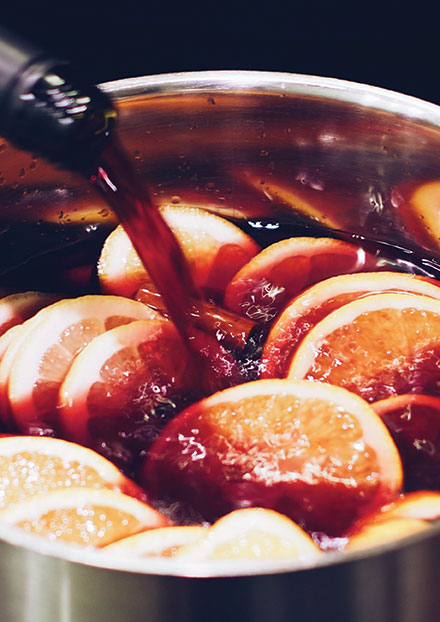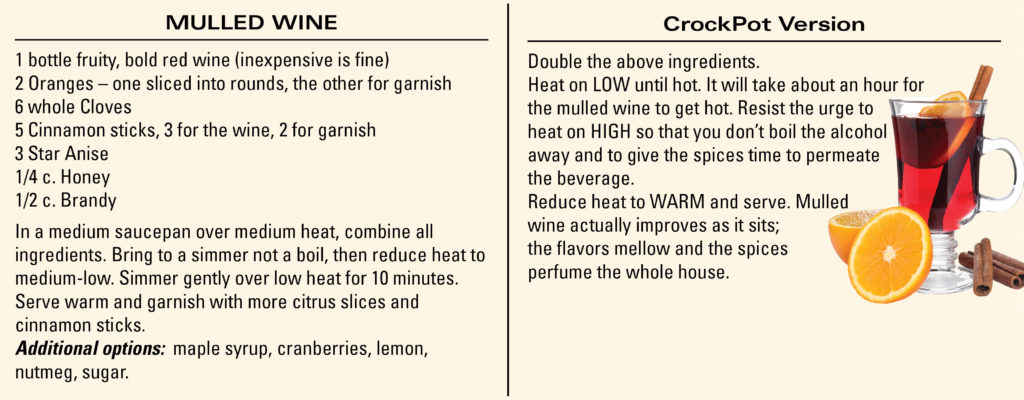MULLED WINE
The most wonderful time of the year has not truly started until you’ve indulged in your first cup of mulled wine. It’s a winter favorite enjoyed by mankind since antiquity. During the 2nd century the Romans would heat wine to defend their bodies against the cold winter, hence the origination of mulled wine. As the Romans conquered much of Europe throughout the next century, their love for mulled wine spread across their empire and the regions they traded with.
 As its popularity continued to grow throughout the middle ages, Europeans would mix heated wine with spices because they believed it would promote health and avoid sickness. They would also use herbs and flowers as natural sweeteners to make unpalatable wines taste a lot nicer. More and more alternatives of mulled wine developed over time and in 1609 recipe books started using the collective name Glögg for mulled wine. As it gained popularity, many names evolved in different countries; glühwein in Germany, Grzaniec Galicyjski in Poland, vin Brûlé in Italy, and Vin Chaud in France.
As its popularity continued to grow throughout the middle ages, Europeans would mix heated wine with spices because they believed it would promote health and avoid sickness. They would also use herbs and flowers as natural sweeteners to make unpalatable wines taste a lot nicer. More and more alternatives of mulled wine developed over time and in 1609 recipe books started using the collective name Glögg for mulled wine. As it gained popularity, many names evolved in different countries; glühwein in Germany, Grzaniec Galicyjski in Poland, vin Brûlé in Italy, and Vin Chaud in France.
In the 1890s, Glögg became associated with Christmas. Every wine merchant across the country had their own unique recipe to share. They started marketing their recipes in their unique bottles (most depicting Santa Claus) and distributed them throughout the rest of Europe. Charles Dickens even wrote about a version of mulled wine called Smoking Bishop in his 1843 novel “A Christmas Carol.” Henceforth, mulled wine’s association with the holidays was solidified.
Over the next several decades, mulled wine become a global phenomenon, with countries all over the world creating their own unique blends. Variations now include everything from red and white wines to sangria blends and vermouth to port – each country’s method slightly different from the next.
Most modern-day versions have orange, cinnamon, nutmeg, dry red wine and a bit of port or brandy. When winter settles in and the holidays are near, get out your Mulled Wine recipe
and enjoy!








